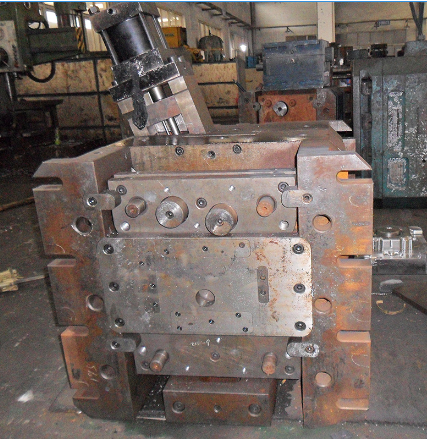For small and simple diecasting molds, the cavity is usually processed directly on the fixed mold or moving mold, that is, the integral mold; For large-scale precision molds with complex shape, inlaid formwork is generally used, that is, the processed cavity insert is installed into the hole of the formwork.
Tools / raw materials
Mold master, steel material, traveling crane, measuring instrument, electric spark, slow wire walking, wire cutting, CNC machining center grinder, collision machine and boring machine.
Method / step
Processing of integral formwork generally adopts forgings as blanks, and its processing procedures are: forging → annealing → rough machining → annealing treatment to eliminate internal stress → quenching and tempering treatment → machining → cavity finishing. The processing procedure is as follows:
- Material preparation: cut the round bar material on the sawing machine according to the material length.
- Forging: forging round bar into hexahedron.
- Annealing: eliminate the internal stress of forgings and improve the cutting performance of blanks.
- Rough machining: rough machining the upper and lower planes on the milling machine or planer, and then process four sides based on these two planes, leaving a finishing allowance of about 1mm.
- Annealing and quenching and tempering treatment: the cutting amount of rough machining is large, and deformation may occur due to uneven internal stress. Therefore, annealing treatment shall be carried out before finishing to eliminate the deformation caused by internal stress. The hardness of quenching and tempering treatment is generally 35-40hrc
- Grinding plane: grind the upper and lower planes and two sides perpendicular to each other on a surface grinder.
- Marking: mark out the center position, contour and core position of the cavity based on the vertical two side surfaces.
- Boring: use coordinate boring machine to process guide pillar hole, core hole or gate sleeve installation hole.
- Cavity processing: if the cavity is rectangular, it needs to be processed on a vertical milling machine.
- Polish the cavity.
matters needing attention
- During rough machining, 1mm finishing allowance shall be reserved
- Annealing, quenching and tempering, elimination of internal stress should be balanced
